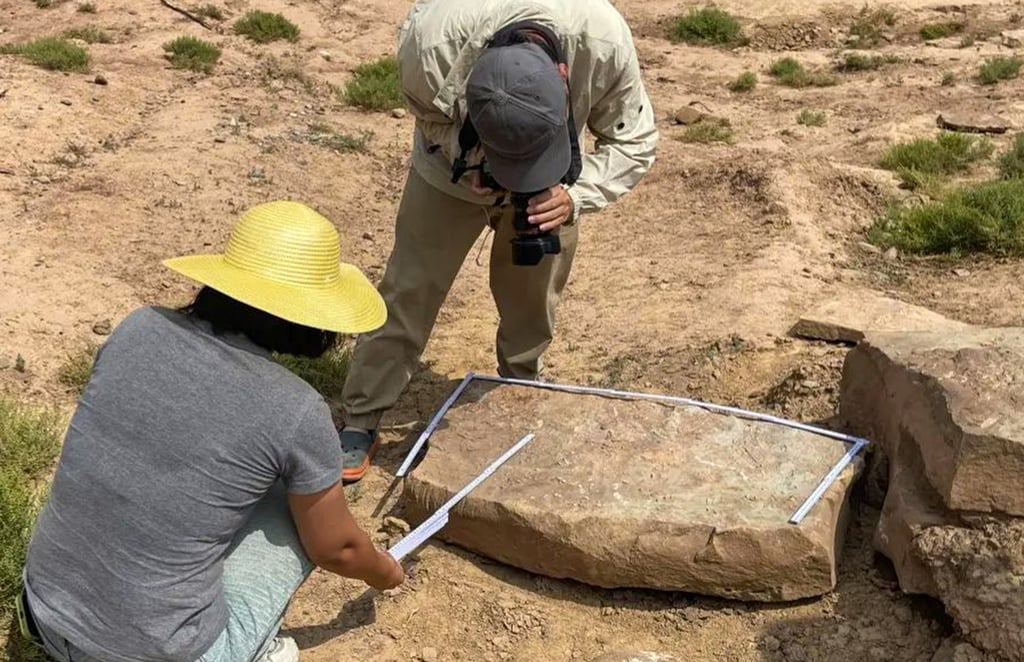Tiny fossilised footprints that may have belonged to dinosaurs smaller than chickens have been found in northwest China for the first time, in a discovery that could shed light on the evolution of birds.
The five three-toed fossil footprints found in Gansu province measure between only 1cm (0.39 inches) and 3cm (1.18 inches) across. They are believed to belong to one of the smallest dinosaurs ever discovered – a tiny genus of bipedal terrestrial dinosaurs called Minisauripus.

“We estimate that the body length [of the dinosaurs] is about 25cm (9.84 inches), but the tail should account for at least half of the length,” said Xing Lida, a palaeontologist and associate professor at the China University of Geosciences.
In comparison, house sparrows typically have a body length of about 17cm (6.69 inches), a pigeon measures around 35cm (13.8 inches) from head to tail, and a domestic chicken typically measures between 40 and 60cm (15.7-23.6 inches) long.
Similar footprints dating to the early Cretaceous period – which lasted from 145.5 to 100.5 million years ago – were first discovered in the Sichuan Basin in southwest China, and have also been found in the eastern province of Shandong as well as in South Korea.
The discovery of the latest tracks – found in the recently declared Linxia Unesco global geopark – expands the known habitat of the Minisauripus into one of the most abundant regions for fossils in China.
The footprints were found in August last year by employees from a dinosaur museum within the park, after continuous rainfall exposed the tiny marks on the weathered rock surface.
According to Xing – who was part of the team that examined the earlier footprint find in southwest China – the latest discovery could help researchers to gain further insight into the evolution of birds.
“The miniaturisation of dinosaurs was a key factor in their evolution into birds, and it was a very important evolutionary event,” he said.

Ripple marks on the rocks in Gansu suggested that the dinosaurs who left the tracks may have been active next to water. Waterbird footprints were also found alongside the tracks, which was consistent with similar finds in other regions, Xing said.
According to Xing, studying the tracks could also help to shed light on dinosaur behaviour, including how they interacted with their environments.
In a paper published in 2016, Xing and his colleagues estimated that an adult Minisauripus may have had an estimated body length ranging from just 12cm (4.72 inches) up to 71cm (28 inches).
The Minisauripus is the smallest carnivorous theropod genus known to science that is not part of the Avialae, the only group of dinosaurs with living representatives – today’s birds, according to the paper.
The researchers acknowledged in the paper that there was a possibility the miniature tracks belonged to a juvenile from a slightly larger species.


